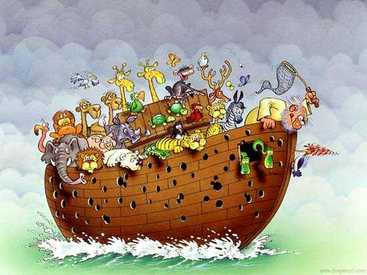 That woodpecker has to go. (courtesy of Ramon Teja)
That woodpecker has to go. (courtesy of Ramon Teja) After going through some elaborate calculations, researcher John Woodmorappe says sixteen thousand animals would require about 46.8 percent of the floor space of a three-deck ark, based on several assumptions.
First, he says, “the ark represents temporary confinement of animals in an emergency situation,” more analogous to a modern laboratory or an intensive factory farm than to a zoo, which is a “relatively comfortable confinement of animals on a permanent basis.”
Second, he assumes the representatives of animals on the ark were juveniles. For instance, an animal weighing more than 2,200 pounds as an adult would be represented on the ark as a 110-pound juvenile. At the upper extreme, a two-year-old African elephant, the heaviest land mammal, weighs about 1,900 pounds and a walrus weighs between 100 and 150 pounds at birth and nurses for more than a year before it is weaned. And fewer than 10 percent of all adult mammals weigh more than fifty pounds. The heaviest reptile (the crocodile, weighing between 880 and 2,200 pounds), bird (the ostrich, weighing between 140 and 320 pounds), and amphibian (the Chinese giant salamander, weighing between 55 and 66 pounds) all weigh much less than the larger mammals.
Third, Woodmorappe’s calculations do not assume cages for small animals were stacked on top of each other. But they could have been.
In addition to the animals themselves, the ark would have needed storage room for water —which Woodmorappe calculates to be about one million gallons weighing 4,461 tons and taking up about 144,000 cubic feet, which was about 9 percent of the ark’s 1.5 million cubic feet. It would also have been possible for Noah to have collected rainwater for the first forty days.
Noah was also told to take food for his family and the animals. The bulk of the food would have been hay and grain. Woodmorappe again goes through detailed calculations to conclude that 100,000 to 200,000 cubic feet was necessary to store “the 371-day supply of food for the 16,000 animals.”
It would mean a lot of work for Noah and his family, but it would have been possible to fit sixteen thousand animals on the ark. For more details, see Noah: The Real Story.
 RSS Feed
RSS Feed